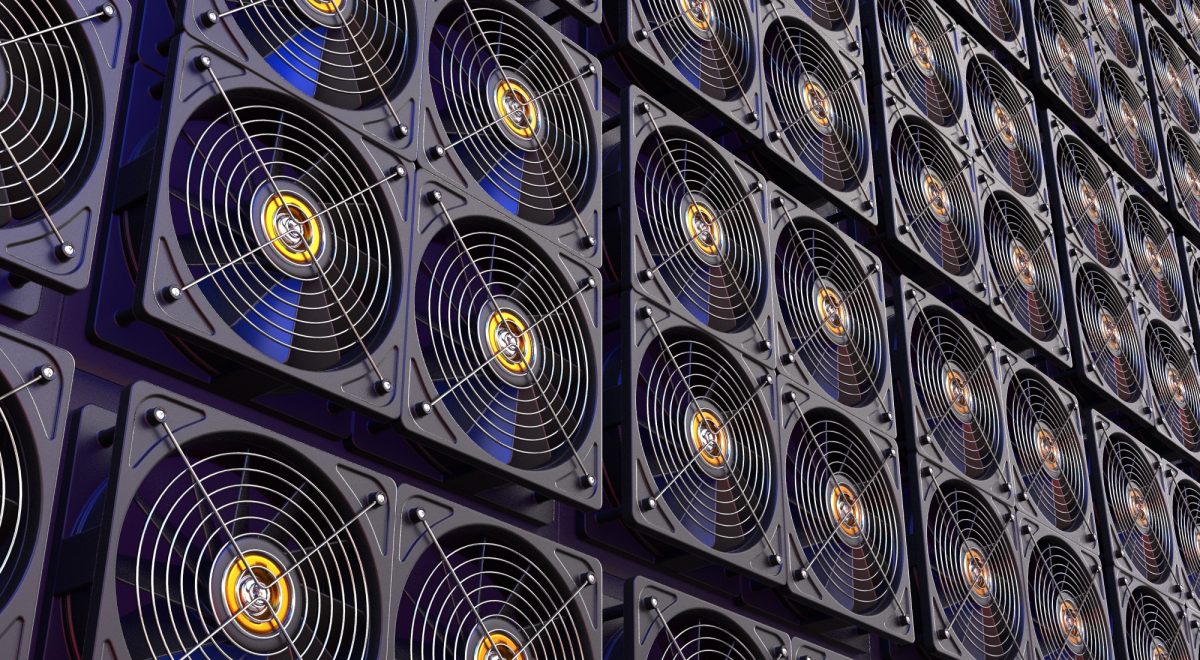Processing power on bitcoin network reaches record highs

21 November 2022
The processing power on the bitcoin network is higher than it’s ever been, which has led the difficulty of mining bitcoin to be increased by 14% . This new record being set, even regardless of the bitcoin price sinking to below 20.000 dollar, is a good indication of the trust in and security of the network.

Bitcoin mining: how does it work again?
You probably already knew that the bitcoin network is a blockchain. Every new block in the chain contains digital and immutable transactions. Creating a new block is called mining, which is done by computer hardware, called miners.
To create a new block, the miner makes a cryptographic summary of the previous block. This summary contains a few different elements; among which a reference to the transactions in the previous block with a random string of characters added to it: the nonce.
Next, all the data is neatly packed into a sort of digital fingerprint in the form of a string of letters and numbers: the hash. The block is only considered valid if this hash starts with (at least) a predefined number of leading zeroes. Miners try finding a correct hash by varying the nonce. When a miner succeeds in finding a new block, it gets added to the blockchain and he received a predefined amount of bitcoin and all transaction fees from this block.
This mining thing sounds quite simple. Just make a summary of the previous block, add some random characters to it, and there’s your new block. And in fact, it is indeed very simple. Guessing a nonce that leads to the right outcome doesn’t involve any complicated math. It only relies on the number of times your computer can try guessing the right thing.
Bitcoin mining is all about speed: the hashrate
A miner which guesses more quickly, also guesses more often, which makes the chance of finding a correct nonce and creating a new block higher. Bitcoin mining is all about how often you can guess and generate hashes, which is called the hashrate.
The hashrate is the number of guesses being done per second, or in other words: the number of hashes being generated per second. The higher a miner’s hashrate, the better their competitive advantage over other miners. The hashrate can both refer to an individual miner’s processing power, and the total sum of processing power on the network.
More processing power doesn’t mean more bitcoin
To keep the amount of bitcoin that gets added into circulation constant, the difficulty of mining is taken into account in the protocol. Only blocks that were “hard enough” to find will be accepted. The mining difficulty is adjusted every two weeks, considering the average amount of time it took to generate a block over the past two weeks. If this was less than ten minutes per block, the network is going too fast, and the difficulty is made higher. If it was more than ten minutes, the opposite happens. This regulates the inflation in the amount of bitcoin to an exact schedule, regardless of the bitcoin price, the number of users or how much processing power is on the network. The difficulty adjustment thus plays an important role in bitcoin’s monetary policy.
Processing power and decentralization keep the bitcoin network secure
The more processing power comes online, the more different miners there are trying to guess the correct number. Not only the amount of processing power is important for bitcoin’s security, but also how spread out it is across the globe. If one miner owns a majority of the hashrate for a long time, he could censor or reverse transactions and reject other people’s blocks. In other words, he could sabotage the network.
This would of course be disastrous for the bitcoin network. Luckily this is almost impossible to achieve in practice. Obtaining the necessary amount of hardware and energy, and finding a place to put all of it, make this a very expensive attack to mount. The current hashrate implies that an attacker would have to embark on a years-long and very expensive campaign to organize getting a majority of the hashrate.
Is a high hashrate combined with a low bitcoin price a problem for miners?
For some, it definitely is. Miners profit most when the hashrate and difficulty are low, while the bitcoin price is high. At this moment, it’s the exact opposite. Whether or not miners will run into problems because of this, depends on a lot of different factors, like energy prices, the specific hardware they’re using, and financing terms.
It’s almost certain that a selection of miners will need to power down due to this situation. This won’t lead to major problems for the security of the bitcoin network, however. In fact, it serves as a sort of “cleanup” of miners: The miners that are using the least efficient hardware and most expensive energy will power down, while the more efficient miners can afford to stay online.
This shift might also lead to miners being more careful with their energy use, which can help bitcoin in becoming greener and contributes to solving the climate problem.
Lastly: can the hashrate predict the price of bitcoin?
This assumption is often made, because the hashrate has been a good indicator of bitcoin’s minimum price, and thus a way of timing one’s entry into bitcoin.
Our asset managers have tested this assumption and concluded that the hashrate does not determine the height or direction of the bitcoin price.

Our website uses cookies
We use cookies to personalize content and advertisements, to offer social media features and to analyze our website’s traffic. We’ll also share information about your usage with our partners for social media, advertising and analysis. These partners can combine this data with data you’ve already provided to them, or that they’ve collected based on your use of their services.